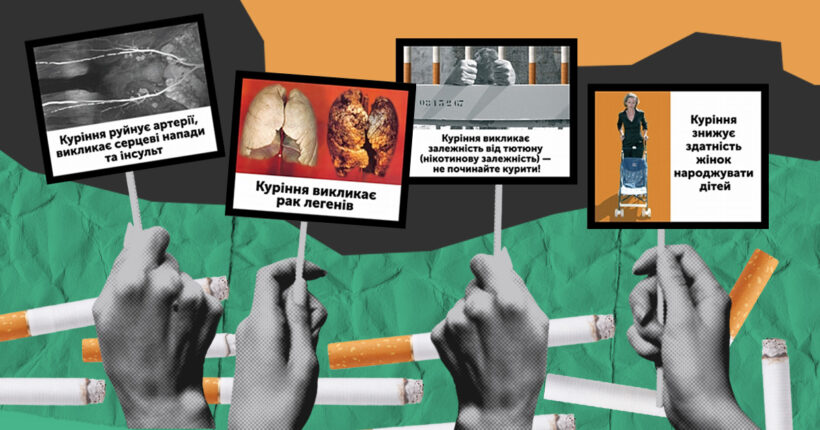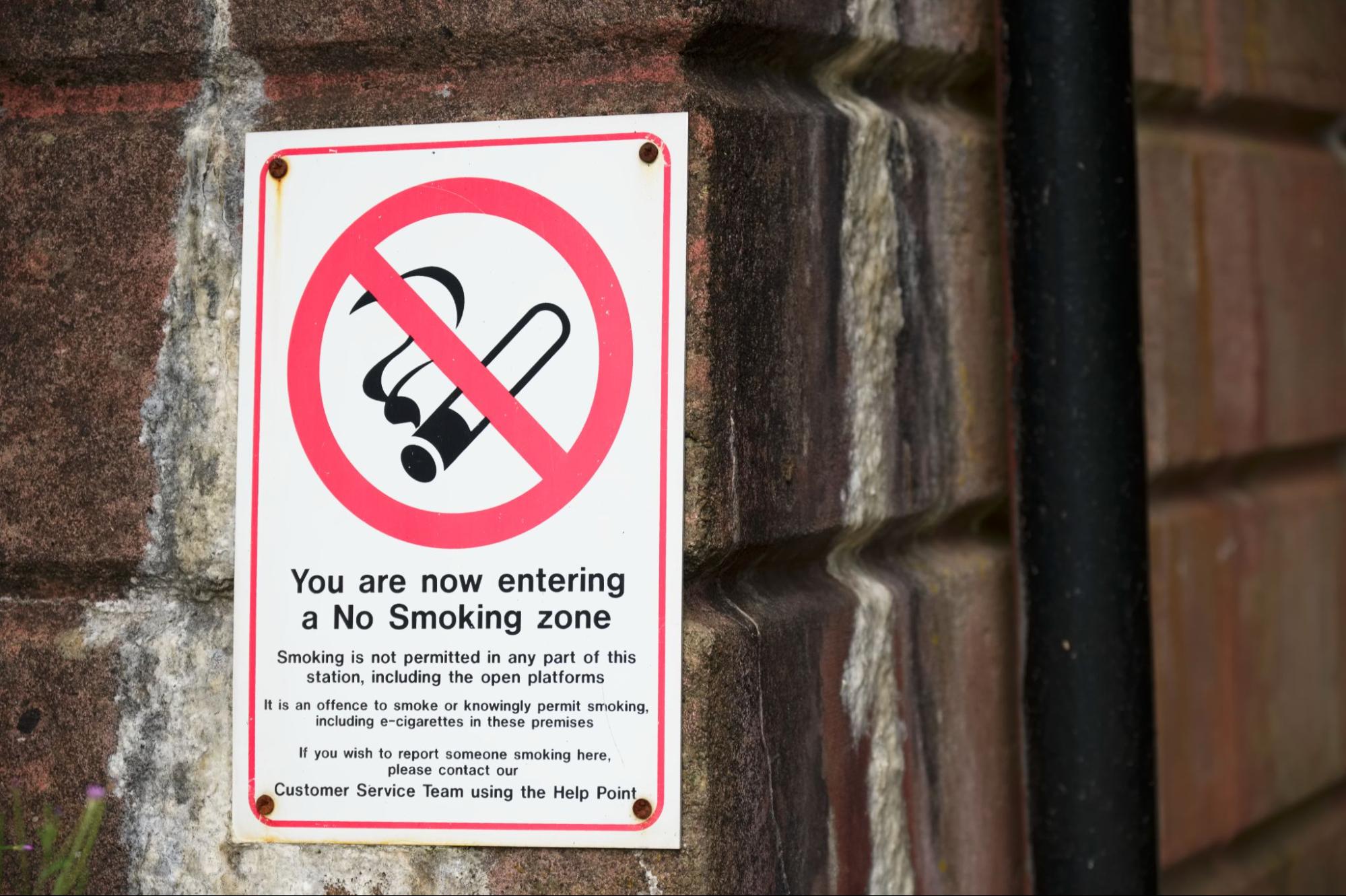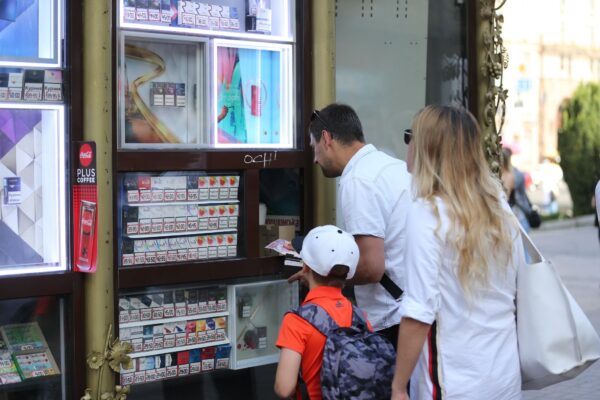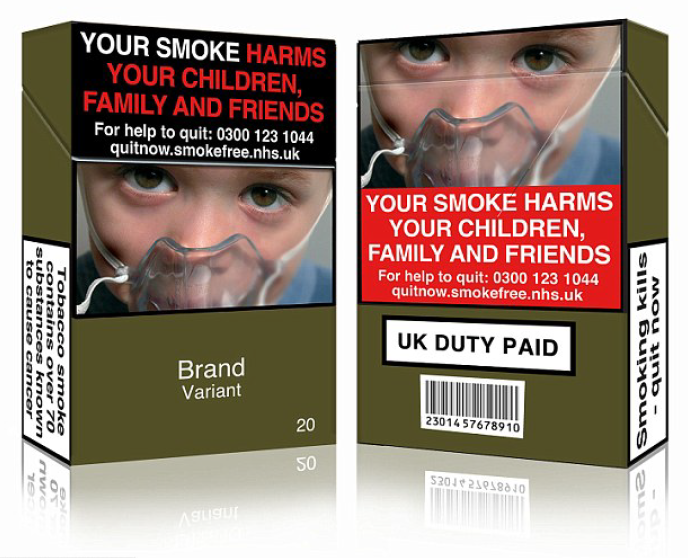
This year, the Ukrainian MPs made a big step in the fight against smoking. On July 11, Law No. 1978 banning the smoking of both conventional and electronic cigarettes and devices for heating tobacco entered into force. In addition, the medical warning on cigarette packs increases to 65% of the package size. It is also prohibited to sell cigarettes with flavors and aromas, as well as advertise and promote the sale of tobacco products.
However, two critical changes should still be adopted to preserve the health of children and adolescents. The first is a ban on the display of tobacco products. The second is the introduction of standardized cigarette packaging.
Why are these changes in time, and how will they affect public health? Find out in Rubryka's article.
Packaging, marketing, and electronic cigarettes

"The adopted legislative changes, which came into effect on July 11, certainly correspond to the evidence base of effective measures to combat the use of tobacco and nicotine devices, as well as to the World Health Organization's Framework Convention on Tobacco Control. They are based on the European Directive No. 2014/40, " says Andrii Skipalskyi.
Among the main changes envisaged by the directive is the new labeling of tobacco products.
"There are several requirements. It has been proven that the visual design of a pack of cigarettes is a marketing tool, so advanced countries reduce the attractiveness of packaging," explains Andrii Skipalskyi. In particular, for this reason, the size of the warning about the consequences of smoking is increased on cigarette packaging, so the branding is reduced. In Ukraine, such a change is also already foreseen — Law No. 1978 specifies that the warning must be on both sides of the packaging and occupy 65% of its area. This norm will come into effect on January 11, 2024.
Andrii Skipalskyalso emphasizes that until now, restrictions on electronic cigarettes have not been detailed in Ukrainian legislation. But the European Directive No. 2014/40 foresees the need to regulate this sector, so the Law also considers this. Thus, from 2024, flavorings and aromas will be banned in Ukraine.
"The law stipulates the reporting of the tobacco industry. That is, companies will submit detailed reports on tobacco products on the market, their content, carcinogenic content, and other substances. This will make it possible to control the content of tobacco products and inform the public," the national coordinator from the WHO Bureau in Ukraine adds.
"In all countries of the European region, tobacco consumption is decreasing"

In addition to the directive, the legislation also strengthens the regulation of the circulation of heated tobacco products (HTPs) and sticks.
"They are equated with tobacco products and prohibited from being used in public places, along with cigarettes. The directive does not cover this, but it was developed in 2014 when these products were just entering the market. Now the EU is actively engaged in this issue," Andrii Skipalskyi explains.
The directive provides that countries can introduce additional regulations on the latest tobacco products. Among the possible measures, in particular, are non-price tools of the fight against tobacco, which mainly reduce tobacco products' taste and visual appeal.
How can it work?
Prohibiting the display is an effective mechanism in the fight against children's and adolescent smoking because young people are attracted to tobacco display windows.
"Such a showcase is usually at the child's eye level and always has an authentic design to attract attention. Bright packs or colored sticks can arouse interest in children. And if, at the same time, there is someone nearby who already smokes, there is a high probability that the child will take this as an example. A tobacco shop can be attractive due to the variety of cigarette packs and the effect of their availability because it is located in the immediate vicinity, " says Elia Koroi, a lawyer at the Center for Democracy and Rule of Law.

According to a study, adolescents who more often see displays of tobacco products at points of sale will try smoking 1.6 times more often than others and, therefore, are more likely (1.3 times) to become smokers.
"The current strategy of placing tobacco display cases in places of retail trade near consumer goods, in particular, sweets and snacks, attracts a lot of attention of children and young people to tobacco products," Volodymyr Kreidenko, People's Deputy from the Servant of the People party.
Tobacco products near food make it difficult for children and young people to avoid tobacco advertising.
"Such proximity of tobacco products to sweets or snacks can contribute to the wrong perception of health risks that tobacco carries. Teenagers may get the impression that this is a normal product, not the harmful drug product it really is. In addition, the brightly colored packaging of tobacco products, decorated with various flowers or butterflies, can be equated to candy in the child's subconscious, " says People's Deputy Volodymyr Kreidenko.
Active demonstration of tobacco products leads to an increase in the level of their purchase. That is why it is essential to talk about the ban on displaying tobacco products in places where they are sold.
"The ban on displaying tobacco products in places of sale will lead to a reduction in impulsive purchases and will create favorable conditions for those who want to give up smoking," says Volodymyr Kreidenko.
A lawyer at the Center for Democracy and Rule of Law, Elia Koroi, supports this opinion. The expert is convinced that tobacco display should be banned because its existence increases the threat of the spread of smoking among children and teenagers. In addition, the display itself is a hidden advertisement for cigarettes.
"Anyone can unwittingly remember the names or appearance of tobacco brands and actively pay attention to them in the future. In this way, the tobacco industry forces people to remember to buy a product that kills you, " says the expert.
According to the results of the Global Survey, banning the display of tobacco products at the points of sale was correlated with a reduction in smoking trials among adolescents. Another study by the WHO showed that in countries where tobacco display bans were introduced, current, daily and regular smoking rates among young people decreased.
Andrii Skipalskyi adds that in many countries, the display of tobacco products is regulated by law:
"In general, the display is prohibited because it means marketing. Therefore, it is not entirely correct when they say that all tobacco advertising is prohibited in Ukraine. The display is not prohibited in our country."
More helpful solutions

Standardized packaging is another effective solution for reducing the level of smoking in Ukraine. Such packaging encourages smokers to think about the dangers of smoking when they pick up a pack of cigarettes. Graphic images of the consequences of smoking, text messages about the dangers of tobacco, and dull colors repel and disgust a potential buyer. At the same time, packaging with bright colors, pictures and logos only create an image of "cool" products and encourages people to buy cigarettes.
"Thanks to standardized packaging, there is a real chance to reduce the level of smoking among the population. Visualizing the consequences of smoking makes people at least reconsider their desires and step toward quitting. The experience of various countries, particularly Australia, indicates that standardized packaging is an effective tool to prevent smoking," says a lawyer at the Center for Democracy and Rule of Law, Elia Koroi.
The national coordinator of non-communicable diseases programs of the WHO Bureau in Ukraine, Andrii Skipalskyi, believes that standardized cigarette packaging is a strategy for the future that we should actively follow now:
"Standardized packaging reduces the attractiveness of the pack, the prevalence of smoking, and the use of cigarettes. In several European countries, this norm is already in effect and is effective, for example, in France, Hungary, and Great Britain. For Ukraine, this plan is to be implemented in the future, but today it is worth moving in this direction."
People's deputy from the Servant of the People party, and deputy chairman of the Ukrainian parliament's Committee on Transport and Infrastructure, Volodymyr Kreidenko, believes that the legislative initiative to introduce a standardized pack of cigarettes will be opposed by tobacco lobbyists.
"The introduction of standardized packaging of tobacco products will reduce their attractiveness to buyers, which will certainly affect the sales of these products and, accordingly, reduce the profits of tobacco giants. Therefore, they will try to prevent it in any way, " says the People's Deputy.
However, this will not stop the Ukrainian parliament Verkhovna Rada because standardized packaging without any branding elements, bright colors, and pictures — a marketing tool of the tobacco industry — should reduce the attractiveness of tobacco products, especially among young people.
"Simple packaging of tobacco products increases the effectiveness of graphic medical warnings on packs because branding elements do not distract attention," People's Deputy Volodymyr Kreidenko adds.
In addition, the introduction of standardized packaging will not affect the state budget because the manufacturer bears all costs for producing such packaging. The state will only regulate the form of packaging of tobacco products.
Abroad, standardized packaging is an example of how to fight the prevalence of smoking. The experience of countries such as Australia, Belgium, France, Ireland, and Canada shows a gradual decrease in smokers. Australia became the first country to introduce standardized packaging. In the first year of the new rule, the number of smokers in the country decreased by 5.7%. Such results encouraged other countries to implement similar norms in their legislation. Ukraine can become one of them.







